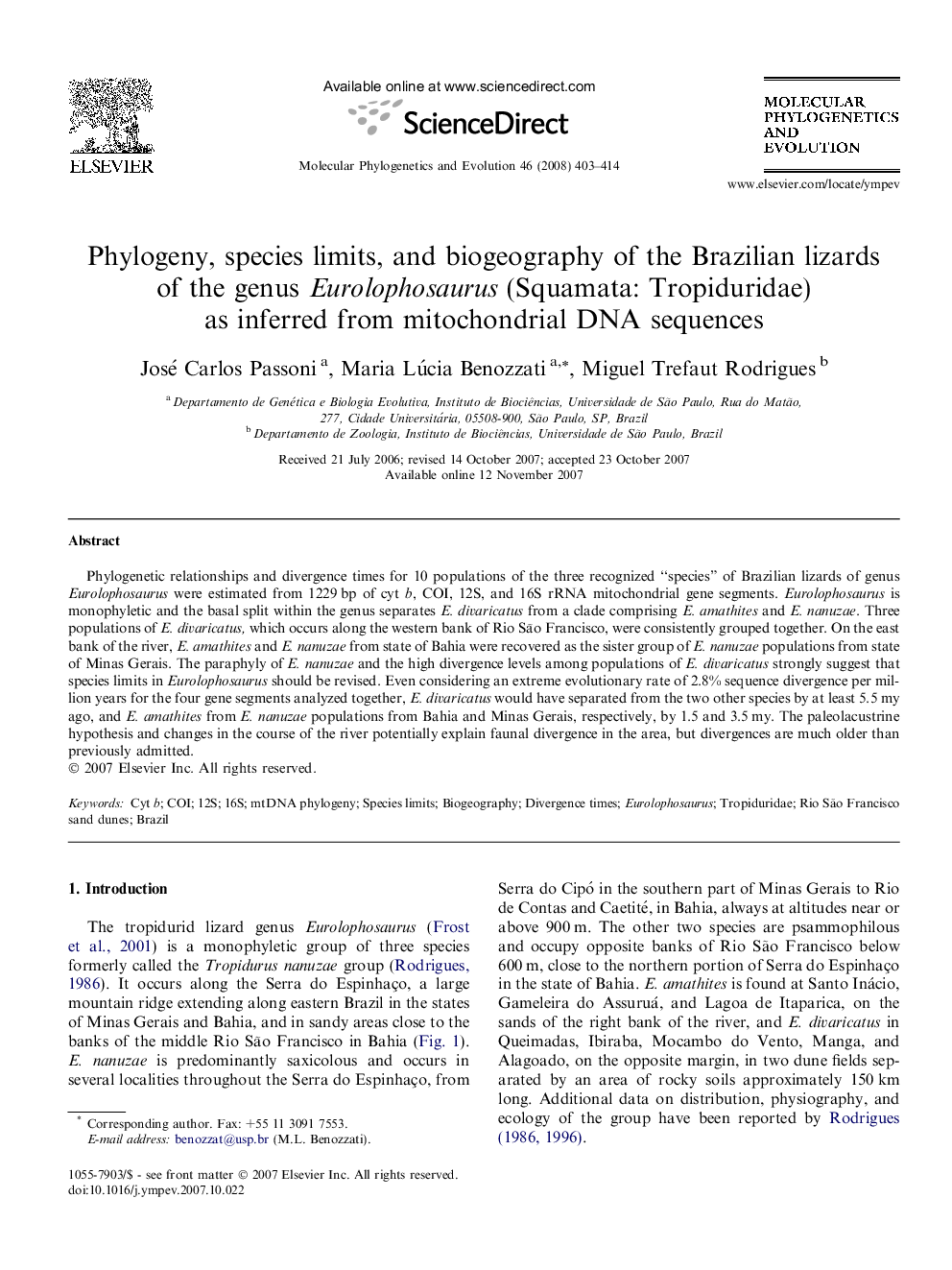| Article ID | Journal | Published Year | Pages | File Type |
|---|---|---|---|---|
| 2835321 | Molecular Phylogenetics and Evolution | 2008 | 12 Pages |
Phylogenetic relationships and divergence times for 10 populations of the three recognized “species” of Brazilian lizards of genus Eurolophosaurus were estimated from 1229 bp of cyt b, COI, 12S, and 16S rRNA mitochondrial gene segments. Eurolophosaurus is monophyletic and the basal split within the genus separates E. divaricatus from a clade comprising E. amathites and E. nanuzae. Three populations of E. divaricatus, which occurs along the western bank of Rio São Francisco, were consistently grouped together. On the east bank of the river, E. amathites and E. nanuzae from state of Bahia were recovered as the sister group of E. nanuzae populations from state of Minas Gerais. The paraphyly of E. nanuzae and the high divergence levels among populations of E. divaricatus strongly suggest that species limits in Eurolophosaurus should be revised. Even considering an extreme evolutionary rate of 2.8% sequence divergence per million years for the four gene segments analyzed together, E. divaricatus would have separated from the two other species by at least 5.5 my ago, and E. amathites from E. nanuzae populations from Bahia and Minas Gerais, respectively, by 1.5 and 3.5 my. The paleolacustrine hypothesis and changes in the course of the river potentially explain faunal divergence in the area, but divergences are much older than previously admitted.
